Crossbeam’s first annual Supernode conference brought together more than 200 partnership professionals for the first conference of its kind.
Over the course of two days, we heard from more than 10 speakers — ranging from VP-level execs to partnership-first investors.
Their insights inspired us to snap photos to make the memories (and data) last a lifetime.
And to laugh along with our guest speakers as they told stories about navigating the partnerships world.
In case you missed it or you were too busy nodding your head along in agreement…
… Yes, the art of winning your sales team’s trust is unglamorous, entailing countless one-to-one meetings, check-ins, empathy-building, and collaborative game plans. (Thanks for the tips to make the process a whole lot more fun, Chelsea Graham.)
… Yes, investment in the partner ecosystem is a telling sign of the most promising startups that are likely to hit their targets faster. (Thanks for the insider tips, Sarah Wang.)
… Yes, it is critical to categorize your partners as your ecosystem grows and revisit your partner categories and priorities annually as your strategy changes. (Thanks, Maureen Little, for helping us commit to having those difficult but necessary conversations to scale our partner programs.)
Below are 14 more things we learned at Supernode 2022. Get ready to copy-paste your favorite insights.
Get your ticket for Supernode 2023 in San Diego here.
#1: Partnerships Provide Resiliency in Times of Economic Uncertainty
Sarah Wang, General Partner at Andreessen Horowitz shared that strong partnerships programs are signs of a safe investment amidst economic uncertainty.
As a round of belt tightening at most venture capitalist firms is underway, your company might be looking for ways to weather the storm — and it turns out that doubling down on partnerships is a great way to do this. According to Wang, investors are significantly more likely to bet on companies with partner generated revenue.
Specifically, Wang is on the lookout for companies with partner programs that:
- Bring in pipeline, shorten sales cycles, and increase conversion rates. Accurate tracking and attribution for partnerships could be key in securing your next round of VC funding. This is worth mentioning to any higher ups who are dragging their feet on prioritizing reporting for partnerships.
- Have diverse streams of revenue. The more partners in a company’s ecosystem, the more likely Wang is to invest.
#2: EICPs Hold More Power Than ICPs (And Influence Buy-In)
Alyshah Walji, Senior Partnerships Manager at Alyce, says you should develop an Ecosystem Ideal Customer Profile (EICP) quickly to drive value for your sales and marketing teams and get their buy-in. As a result of shifting from a sales-based strategy to a solutions-based strategy, Alyshah and his team 4x’ed their pipeline at his previous company Vidyard.
The more traditional ideal customer profile (ICP) doesn’t account for technology fit. In the business gifting platform’s case, Alyce needs to keep up with the growth of the martech space by integrating with tools their customers use most. Due to the explosion of martech, product differentiation is more important than ever.
“While we’ve learned to do a really good job of identifying what ‘ABM Adam’ or ‘Demand Gen Dave’s’ KPIs and business priorities are, we often leave out the tools and technologies that help them accomplish these goals outside of this ICP,” says Walji.
Your EICP could include traits like:
- They use your tech partner’s software for a particular use case common among your customers
- They’re clients of agencies in a particular category, like marketing automation, and/or clients of your marketing automation agency partners
- They fit a particular employee-size and business maturity that signals they may need to or are already working with a system integrator (SI) to combine their systems across teams or business functions
#3: Partner Data is Most Powerful in the Hands of All of Your Go-to-Market Teams
Barbara Treviño, Senior Partner Operations Manager at Seismic, showed us how Crossbeam data can be used to unite all go-to-market teams.
Treviño and her team at Seismic have built a Crossbeam dashboard powered by Domo that combines Crossbeam Salesforce reports and the overlap data. The custom filters and logic allows Seismic’s team to quickly determine if they should co-sell, co-market, source new business, or build new integrations with each partner.
Treviño reported that around 171 Seismic users actively use a custom Crossbeam dashboard, resulting in over 700 quarterly logins.
(Ready to use your partner data to empower your go-to-market teams? We’re going to show you how in this webinar.)
Crossbeam customers on the “Connector Plan” can utilize the Salesforce App, adopt an additional Partner Cloud integration, and more.
#4: Establishing a One-to-One With Each of Your Sales Reps is a Must
Chelsea Graham, Partner Sales Executive at Highspot, met with all 60 of Highspot’s sales reps when she first joined the sales enablement software company. But it’s not just about putting a face to Graham’s name. Graham stresses the importance of listening to each sales rep’s concerns when it comes to working with partners and framing the conversation in a way that will provide the sales reps with more value and the resources they need.
For example: Graham had a debrief with a particular sales rep who was unhappy about how a partner performed on a call with a customer. The sales rep believed the partner was at fault for potentially losing the deal for Highspot. Graham heard the sales rep out and scheduled a call between herself, the sales rep, and the partner to gameplan next steps.
“By the end of the conversation, both parties felt better and created a fantastic follow up plan with the customer,” says Graham.
Create trust with your sales reps by:
- Making it a point to speak with each sales rep to understand what they know about partnerships and concerns they have. Then, reframe the conversation to stress the value of partnerships and how specific partners can provide value to them.
- Check in with your sales reps about the status of each account they’re working on with partners. Gather feedback to improve how your partners collaborate with your team and track wins to share in your team collaboration tools like Slack.
- Develop Mindshare events, like Highspot does, to get your sales reps in a room with partners. Graham’s team ensures each Mindshare event generates new intros for her sales reps from the partner.
- Track your metrics of success, and look to your top sales reps to lead by example. Highspot has observed that partners contribute to 58% of the revenue generated by their top sales reps. Working with partners also influences a 60% larger deal size.
#5: Cherry Picking Metrics of Success Early On Can Help You Get Resources for Tracking Attribution at Scale
CEO of Pandium Cristina Flaschen shared that partner-supported customers stay longer and buy more than non-partner-supported customers. However without the data to prove this, just knowing this anecdotally does little for a partnership professional looking to bump their partner program up in the list of company priorities.
According to Flaschen, partnership folks should begin collecting data from the beginning of the partner lifecycle, then internally evangelize the benefits of partnerships using that data as evidence. However, this kind of data collection is taxing and requires buy-in. Her advice for folks looking to drum up resources to support tracking for the whole partner lifecycle? Start by tracking a metric you know you’ll knock out of the park.
Pick an integration that you know anecdotally is performing well. Showcase the positive impact that integration is having on a metric such as customer retention. Then leverage this insight to get more resources and tracking in place. Continue focusing those resources in places you know will perform well until you’ve gained enough buy-in to track your partner program at a larger scale.
#6: Your Partner Portal is an Ecosystem Growth Lever
Sara Du, CEO & Co-Founder of Alloy Automation, grew the e-commerce automation platform’s partner program from zero to 200 in less than two years.
Du says, “No one cares about your partner tiers. They care about money and clout.” Your partner portal is the fastest way to attract new customers and new partners to your ecosystem.
To encourage partners to believe in your company and partner ecosystem in the early days, Du suggests:
- Play into your product’s “stickiness” early on (e.g. through marketing and co-marketing that establishes your product as a critical component of your customers’ tech stacks)
- Include images of your partners’ faces in your public-facing materials (partners trust their partners, a.k.a. their friends)
- Share your place in your Supernode partners’ ecosystems (like how Alloy Automation partners with Shopify — which generated $50 billion for its partners in 2020). Du refers to this as a “FOMO machine”.
- Be forward-thinking in your messaging and mission (e.g. how Webflow promoted the “no-code revolution”).
#7: Building Scalable Systems is a Key Part of Any Mature Partner Program
For those not familiar, the Crossbeam Tech Ecosystem Maturity Diagnostic helps you understand how your tech partner program stacks up against other programs in B2B SaaS, what you’re doing well, and how you can advance to the next level of maturity.
Maureen Little is the VP of Technology Partnerships at Okta, an identity and access management company with a tech partnerships program that ranks at the highest level of tech ecosystem maturity — the “Supernode” level. One way Little brought Okta’s technology partnerships program (which includes 7,300 integrations) to Supernode status was by focusing on building scalable systems.
Specifically, she recommends that those running partnership programs:
- Segment all partners. Not all partners are created equal — and that’s ok. Create a list of criteria that determine a partner’s value to your program and corresponding tier levels relating to which criteria each partner meets. Targeting partnership initiatives to your high-value partners will help you scale while putting your resources towards those with the highest ROI. Little recommends reviewing your criteria annually to ensure all categories align with your most up-to-date strategy.
- Create partner categories. Most healthy partner programs include multiple kinds of partners. Define the categories of partners included in your program and the roles that they play.
- Document your program. There are overlapping responsibilities between partnerships, sales, and marketing team roles through the partner lifecycle. A lack of clarity around how and when various team members interact with a partner can cause confusion when scaling. Avoid this by documenting the partner lifecycle and including all touch points for each internal team member.
- Automate where possible. There is a large offering of technology specifically designed to help run a partner program. Invest in software that helps you automate your workflows to prevent manual work from bogging down your scaling process (like PEPs for account mapping).
#8: You Need to Define Your Inputs and Outputs at Your Partner Program’s Launch
You can (and should) use data to get buy-in and resources for your partner program before you can show results.
Brian Jambor, VP of Global Channel Programs at Uberall, says to establish the inputs and outputs of your partner program early on. The data will help you build your case to request resources that will fuel your ecosystem’s growth.
“Then it becomes a conversation of, ‘I need X resources,’” says Jambor.
For example: Know how many agency partners you plan to onboard in month one, month two, and month three and how much revenue you plan to influence over time.
#9: Creating a Three-Year Plan Can Get You More Resources and Headcount
Lisa Hopkins is the VP of Partnerships at Amplitude, a digital systems optimization company. She has experience guiding partner programs through the intermediate stages of maturity, or as she calls it, the “awkward teenage years.”
As teenagers are encouraged to have a post-high school plan, Hopkins recommends all partnership professionals create a three-year strategic plan for their program. A three-year plan highlights what Hopkins calls “the art of what’s possible”.
Hopkins recommends establishing a reasonable but ambitious partnerships-specific goal. For example: After realizing that her team was being measured by a misleading metric, Hopkins put together a three-year plan that would have her team measured through closed referred and influenced business and set a percentage goal to hit by the end of those three years.
By working backward from this end goal, she was able to chart the impact over time, track the headcount needed to hit that goal, and outline the kind of team support that would be needed. According to Hopkins, “it changed the conversation from ‘You sure you need that many people?’ to ‘How do we accelerate this?’”
#10: We Need to Teach Ecosystems, Not Empires
Collaboration fuels ecosystems. A successful partnership requires partners to find a common ground, understand each other’s goals, and work together throughout the partnership lifecycle. It also requires the partnerships team to drive value for nearly every other team within its org — from marketing to product.
Pamela Slim, Co-Founder of Main Street Learning Lab, says partnership professionals are well-positioned to be leaders. She attributes this propensity to the partnership professional’s ability to:
- Listen deeply to partners and internal stakeholders (and build their needs into their partner program)
- Fulfill a long-term vision (requiring patience and resilience in overcoming roadblocks and driving long-term results)
- Develop out-of-the-box solutions (with tech partners and solution partners
We’ve seen this skillset impact customer churn and impact the entire org. The deep empathy the partnerships team must have for marketing, sales, and product, to name a few, could also directly impact employee churn.
#11: Ecosystems Require a New Open GTM Mindset
Allan Adler, Managing Partner at Digital Bridge Partners says that an ecosystem mindset — not just partner programs — is the future of business.
The evolution of cloud, SaaS, APIs, and AI tech has transformed markets. Platform business models and their network effects have replaced traditional, closed-off marketing tactics. Ecosystems are steadily becoming more important and are driving:
- Consistent and rapid growth
- Differentiation and competitive advantage
- Stickiness/retention and loyalty
- Value and societal contribution
Adler shared the importance of aligning your organization around this go-to–ecosystem mindset. When your CEO, marketing, sales, product, and customer service teams all revolve around the ecosystem, your company is able to win with end-to-end solutions.
#12: Align Early Metrics of Success to Each of Your Internal Department’s Goals
Mike Stocker, VP of Partnerships at RollWorks, went from being a one-person partnerships team to a team of nine in just three years (with three more hires in the works).
To get buy-in for growing his team and partner program, Stocker tracked the following metrics:
- Partner-influenced revenue
- Partner-sourced revenue
- Partner impact on sales funnel
- Partner impact on renewal/retention rates (read: RollWorks saw a 30% higher renewal rate for customers who adopted at least one integration)
Stocker was able to get more resources by setting up systems that helped him track early metrics of success. These systems included:
- Defining partner-influenced and partner-sourced revenue for his entire org (think: establishing a system of thought). Stocker published the definitions, including a statement declaring that partner-influenced revenue included partner-sourced revenue.
- Working with RollWorks’s RevOps team to create fields for “partner influenced” and “partner sourced” in the opportunity record in Salesforce.
- Working with their RevOps and Sales Enablement teams to auto-mark partner mentions from Gong and Chorus inside Salesforce
- Requesting that his team tie the partnership team’s integration adoption metrics with their existing customer retention and renewal metrics.
Focus on specific metrics of success that resonate with each department you’re looking to get buy-in from.
For customer success alignment, Stocker analyzes retention and renewal rates.
For marketing alignment, Stocker shares pipeline contribution.
For product alignment, Stocker shares adoption metrics.
And for sales alignment, Stocker shares pipeline contribution, close/won rates, deal size, time to close, and so on.
#13: Accelerating Partner Discovery and Activation Can Increase Your Tech Partner ARR
Chris Lavoie, Technology Partnerships Team Lead at Gorgias multiplied his team’s annual recurring revenue (ARR) by four by prioritizing an accelerated partner discovery and activation process.
This simple yet effective play is easily repeatable:
Establish ideal customer profile (ICP) overlap and total addressable market (TAM) on your first call. Use the account mapping matrix in Crossbeam to unearth:
Prospects vs prospects
Customers vs customers
Customers vs prospects
Establish and track TAM with this formula:
The TAM should tell you from the first call whether or not this partnership is a fit and whether or not it should be prioritized.
Number of partner customers (your qualified prospects) X your average contract value (ACV) = TAM
Then, use TAM and integration adoption and product marketability to discern the prioritization level of your partner.
You can watch more partnership plays from Gorgias here.
#14: Partnerships Professionals Must Be Connectors, Persuaders, and Mavens
In Malcolm Gladwell’s The Tipping Point: How Little Things Can Make a Big Difference, Gladwell says “The success of any kind of social epidemic is heavily dependent on the involvement of people with a particular and rare set of social gifts.”
According to the “Pareto Principle,” or the “80/20 rule,” 20% of a given population will fuel 80% of results. The Pareto Principle originated when Italian economist Vilfredo Pareto observed that 80% of peas came from 20% of the peapods.
Jared Fuller, Co-Founder and CEO of PartnerHacker, says that the attendees of Supernode are the 20% that will change the world — by way of the ecosystem. Fuller says that while, traditionally, salespeople are “influencers” and media people are “mavens,” partnerships people must be “connectors”, “persuaders”, and “mavens.”
Fuller says, “We are interrupted by interruptions.” According to Deloitte’s Annual State of Marketing Report, people receive 400-1,000 advertisements each day — making it difficult to sort noise from quality. This is causing people to rely on trust first and foremost.
Partner ecosystems enable partnership professionals like you to identify which tools, integrations, and joint solutions your customers need and love, thus setting into motion a flywheel of ecosystem growth. Your customers request integrations, they see success using said integrations, adoption rates grow, and your ecosystem thrives.
“Trust is the new data,” says Fuller.
—
Want to host a movie night with your closest partnerships friends — or simply to watch each of the recordings on your own? Sign up for our newsletter below to get the recordings of every talk from Supernode 2022.





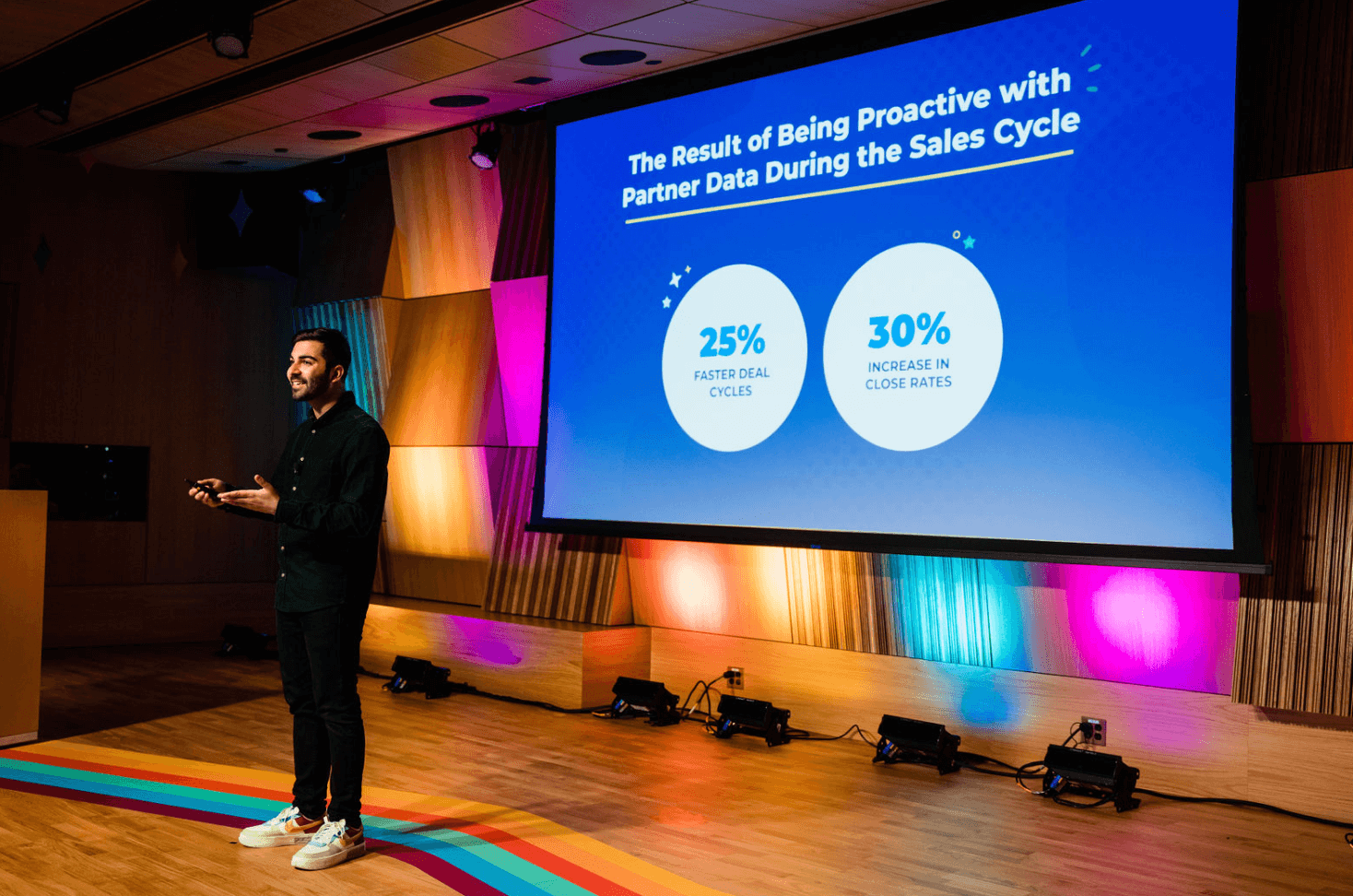
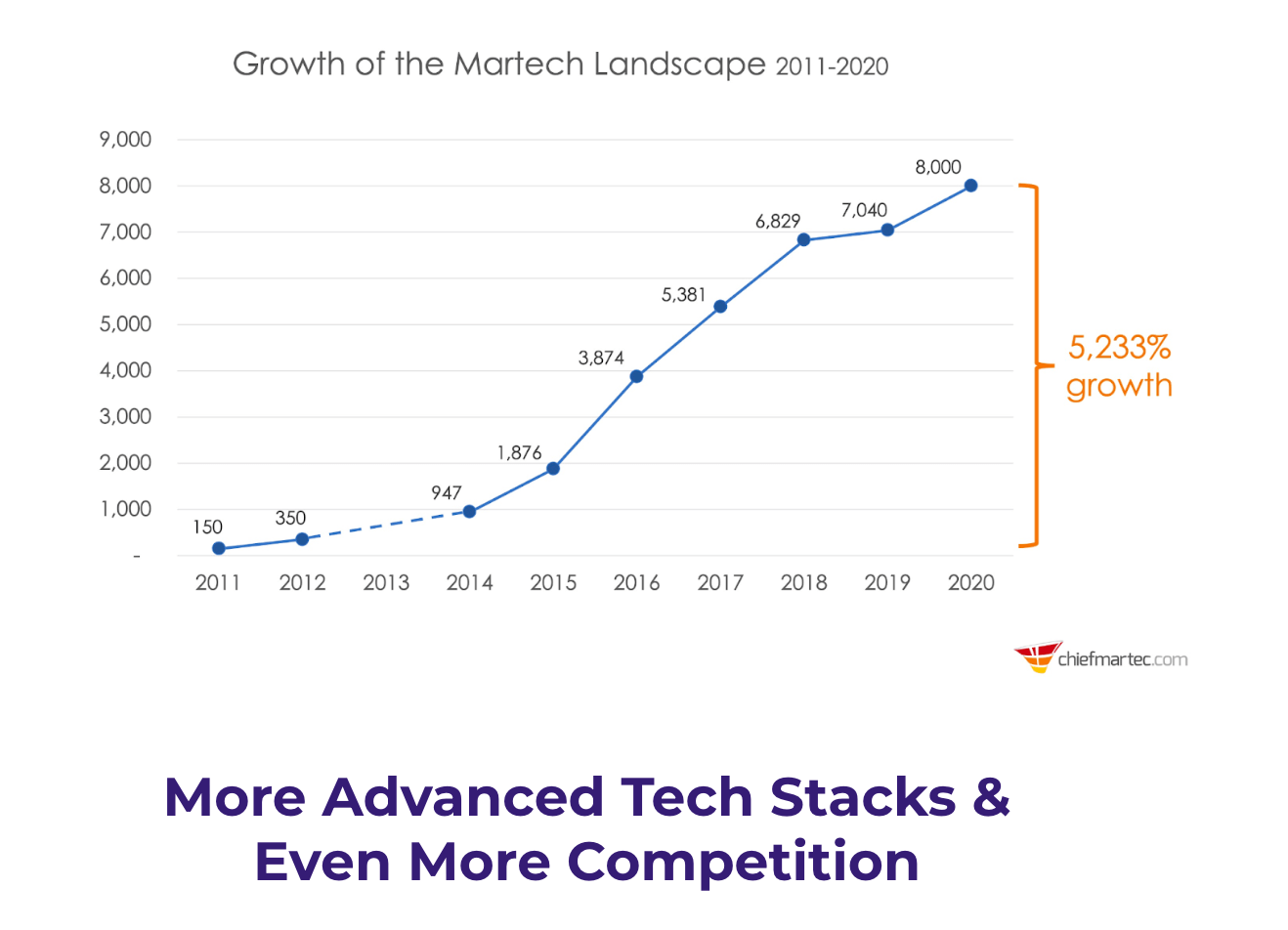

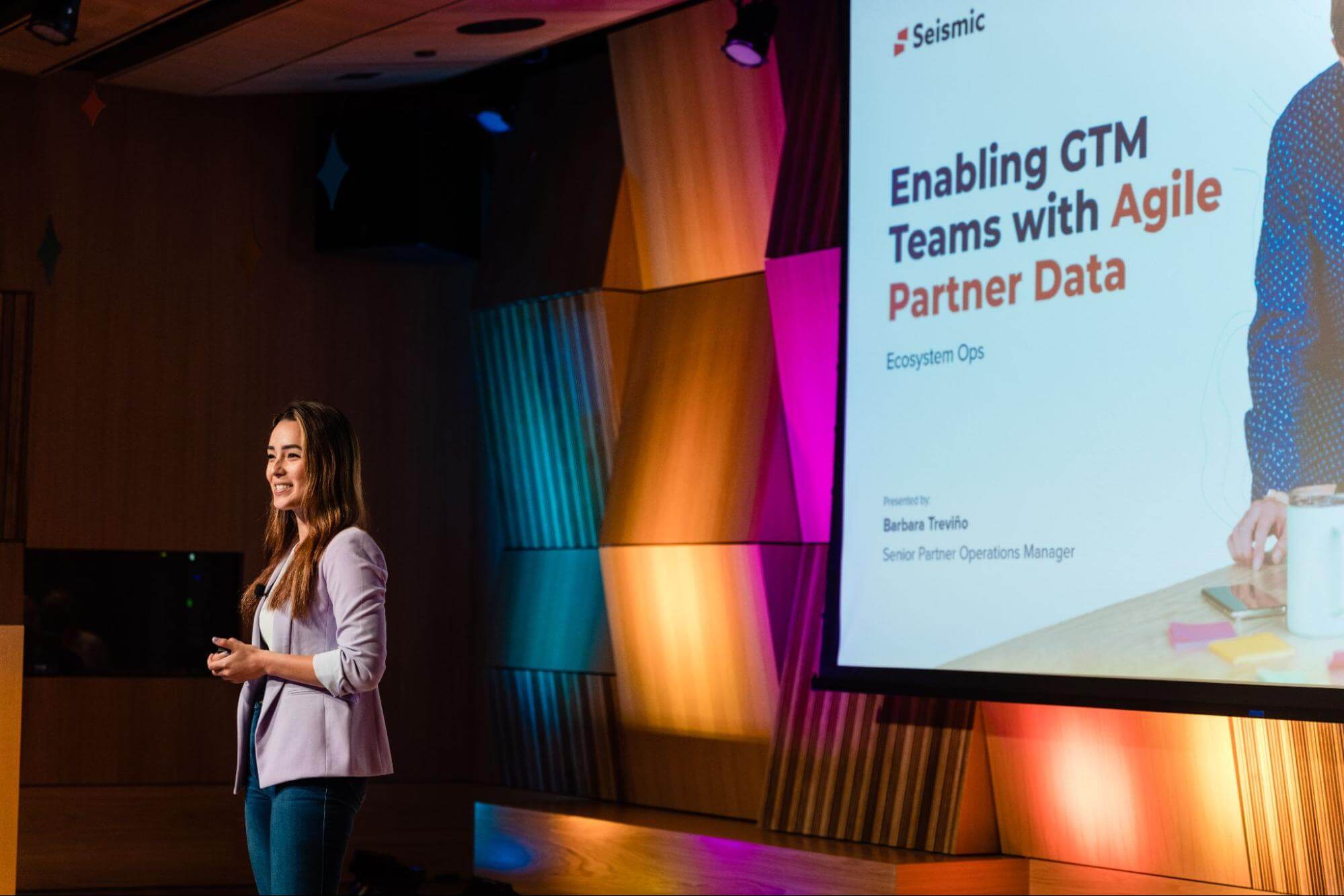





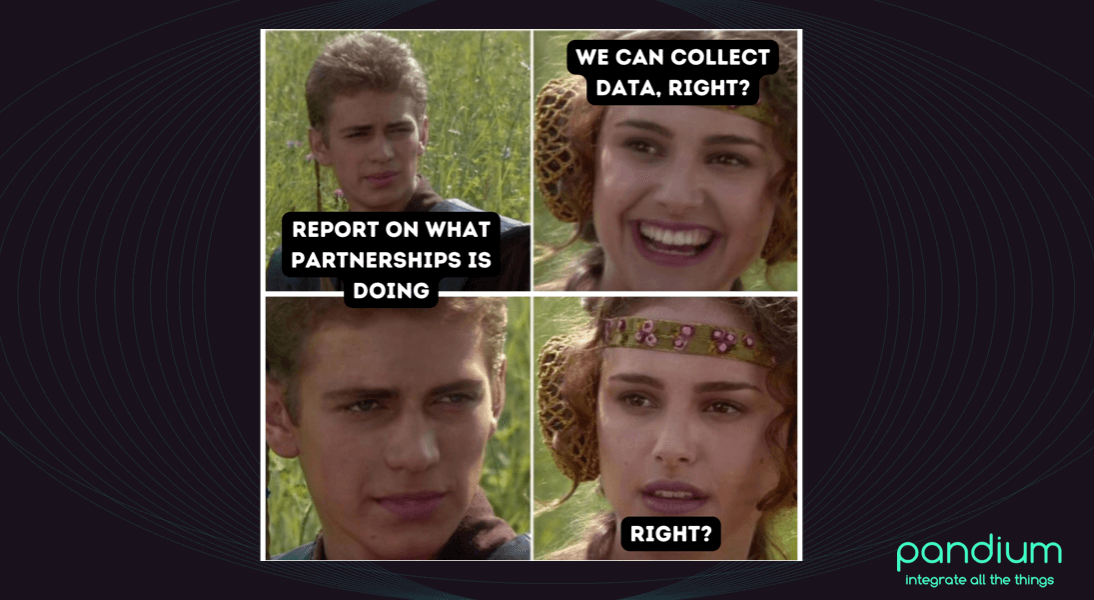
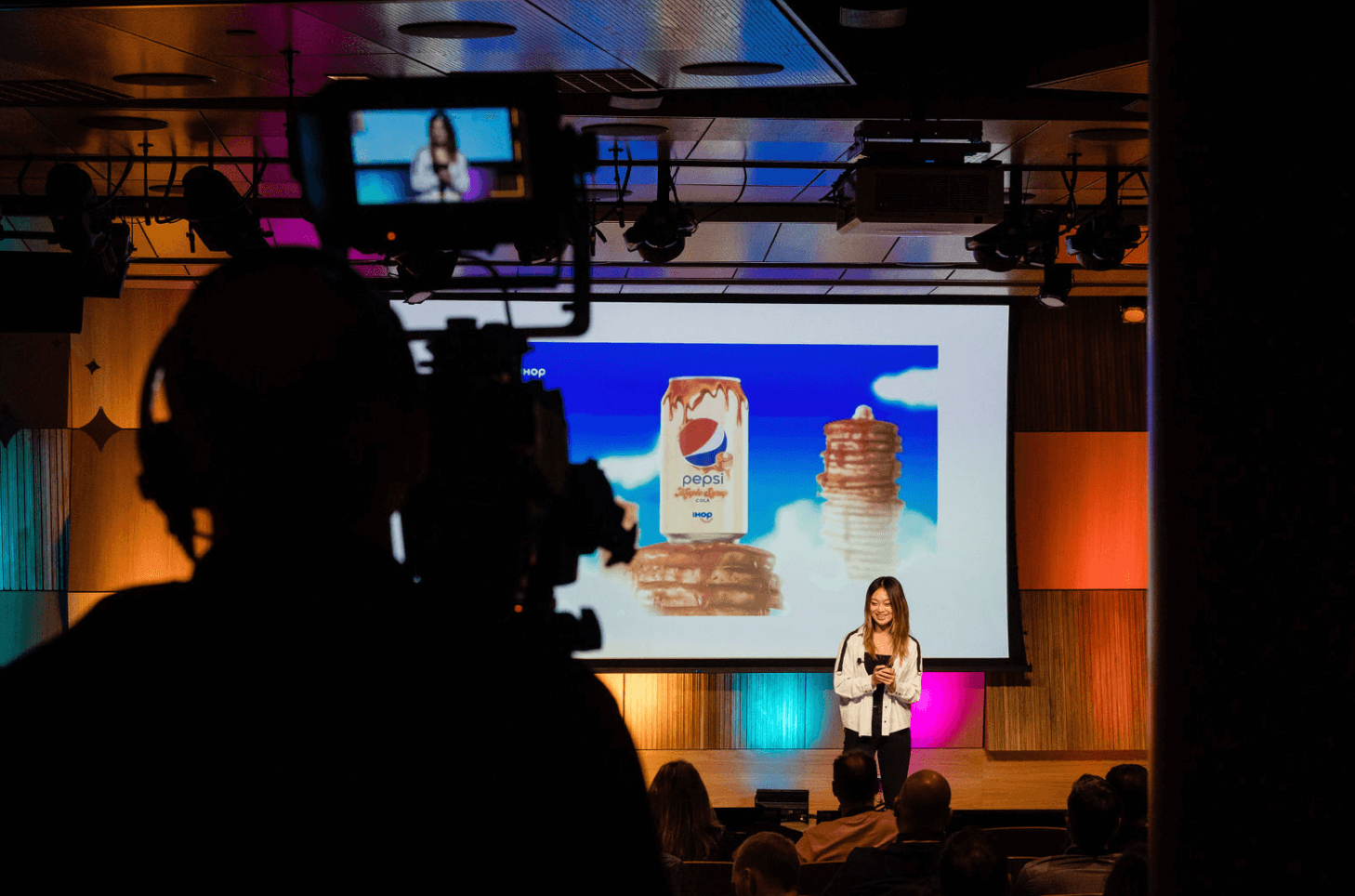



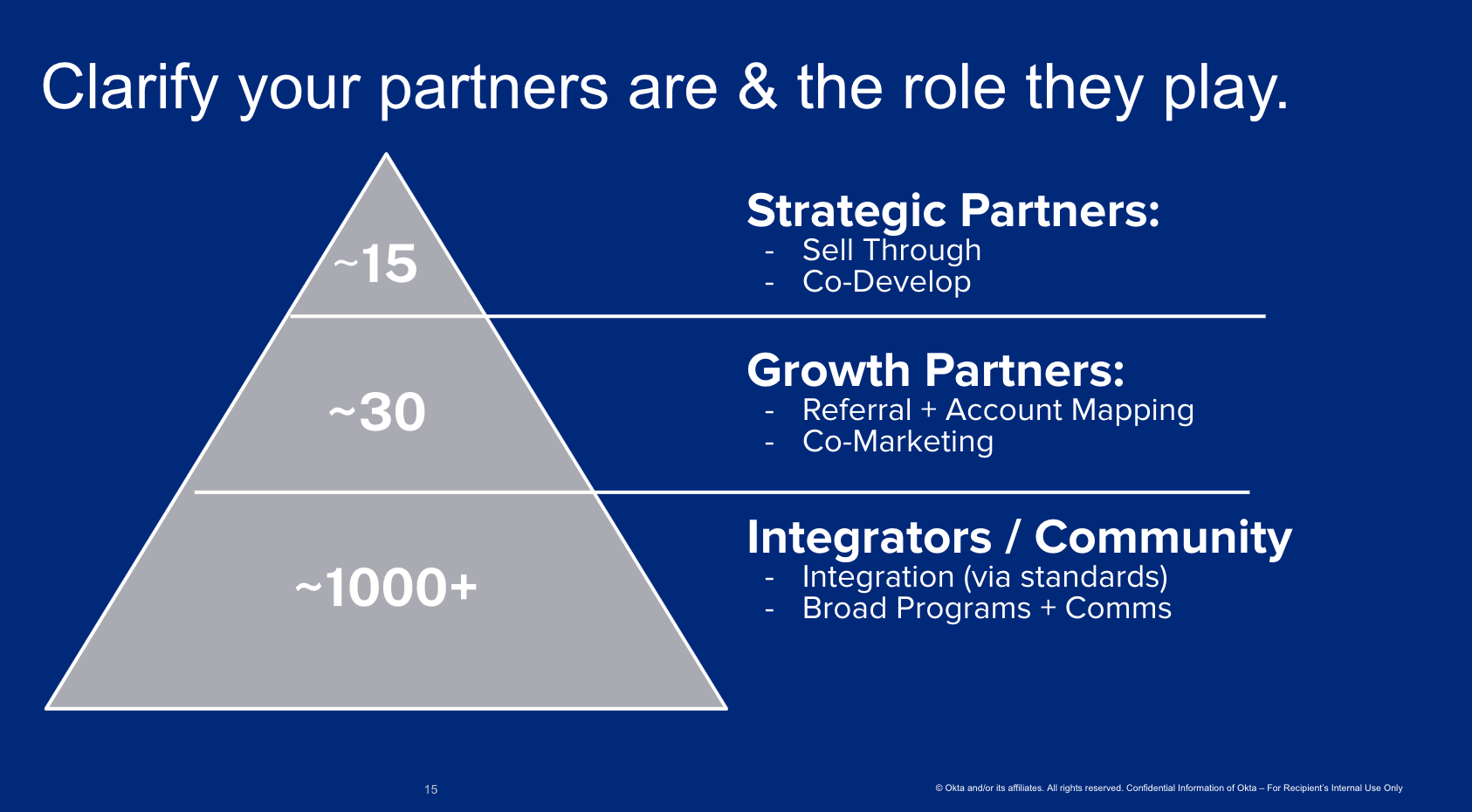






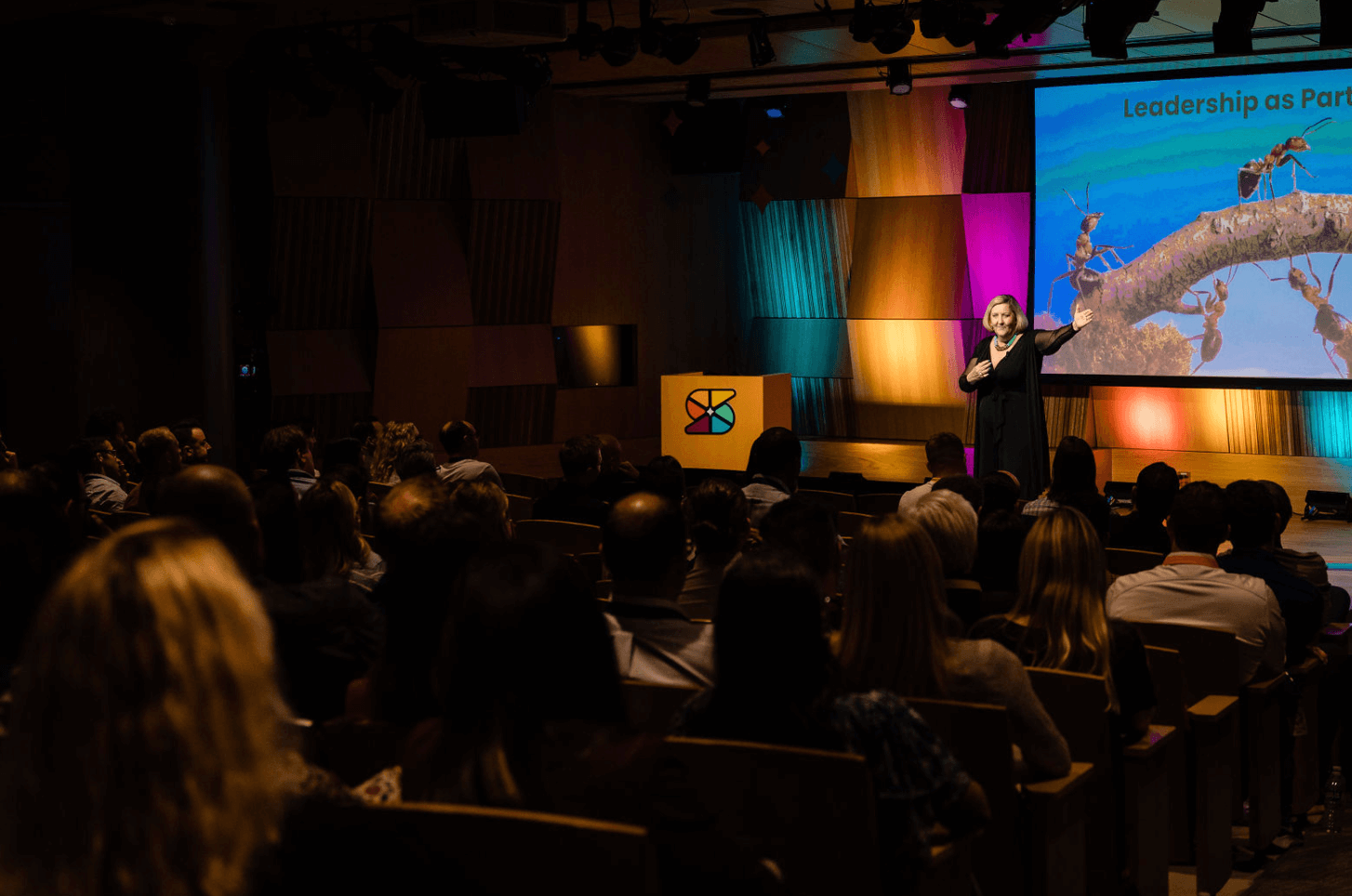


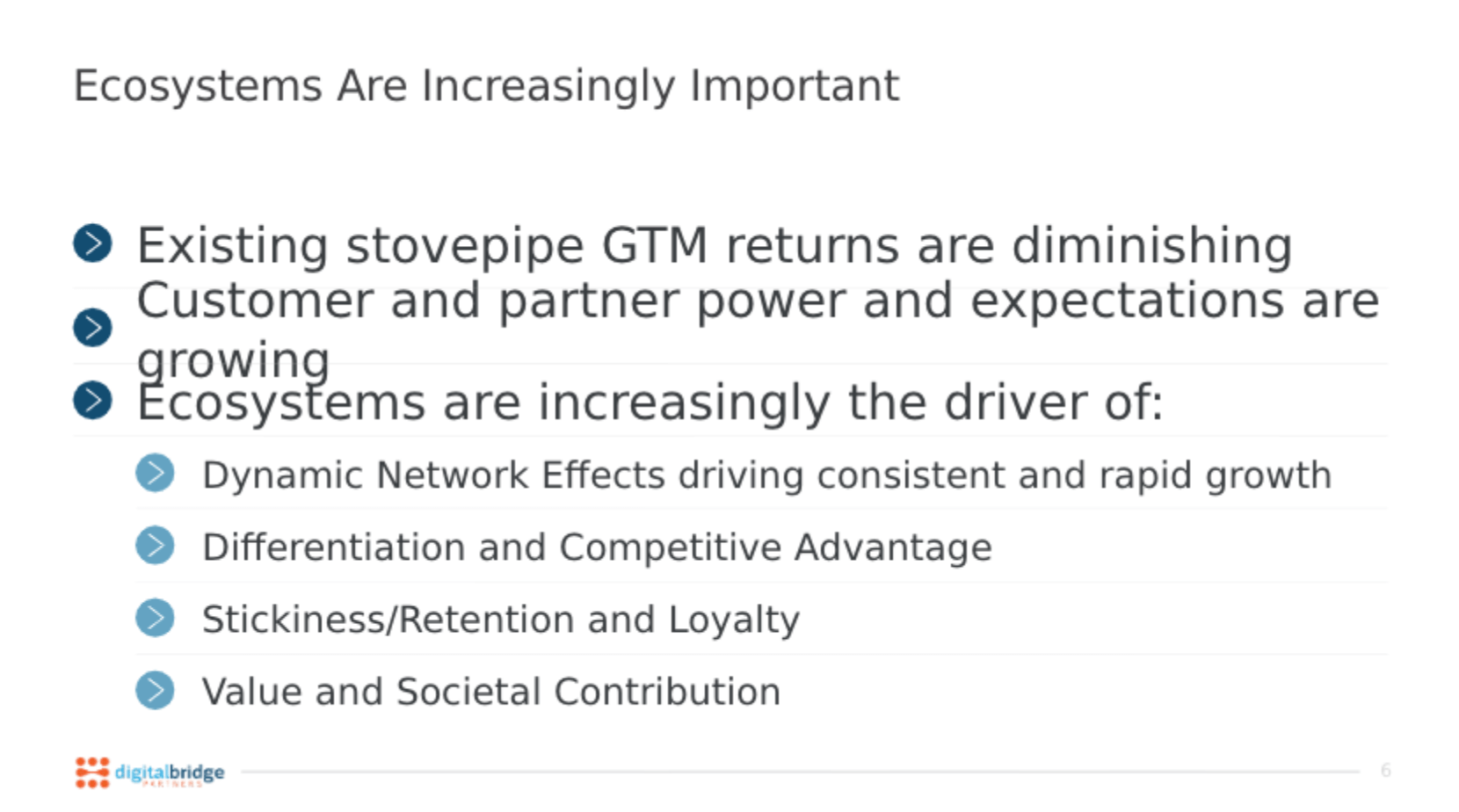










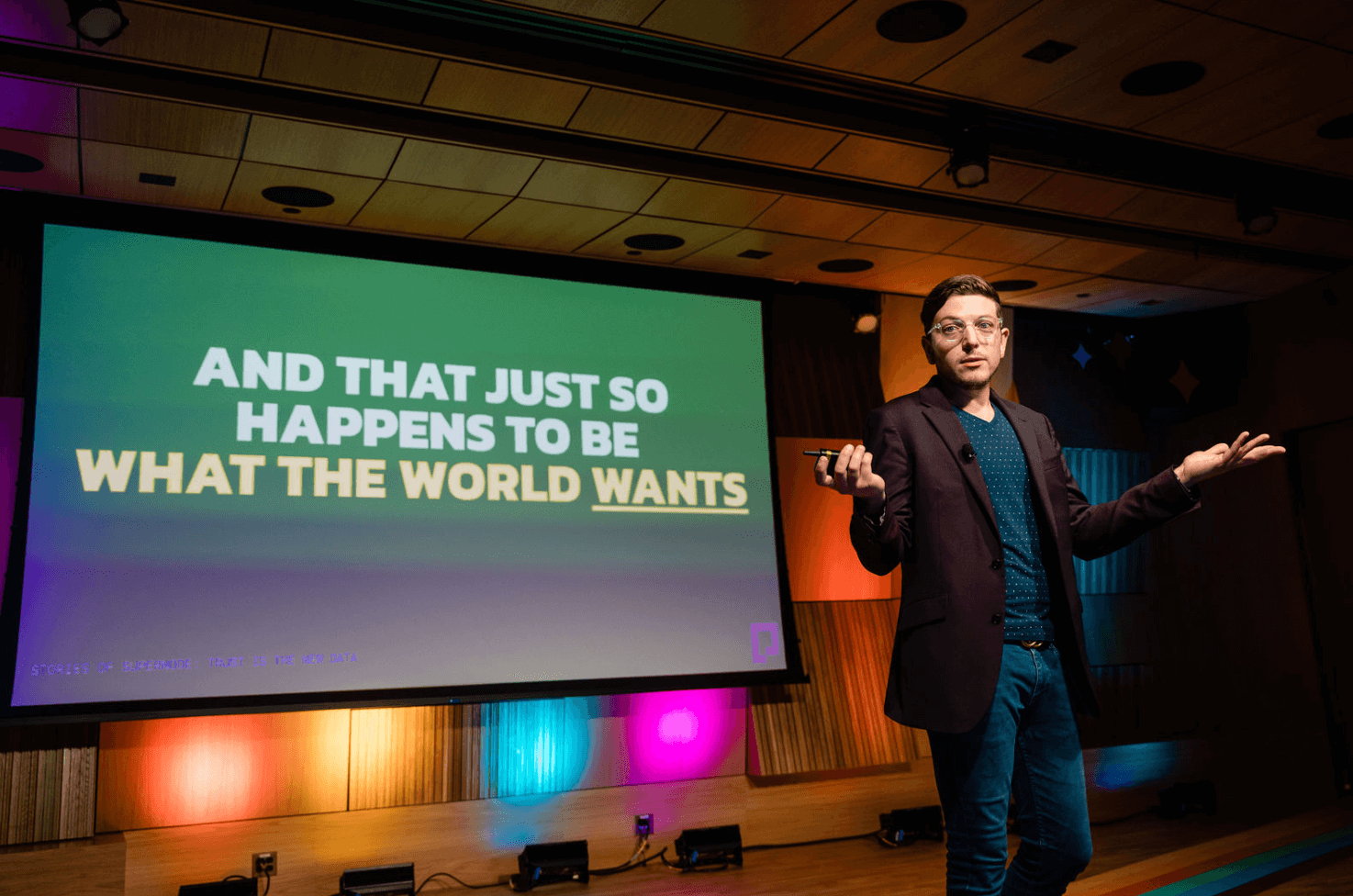

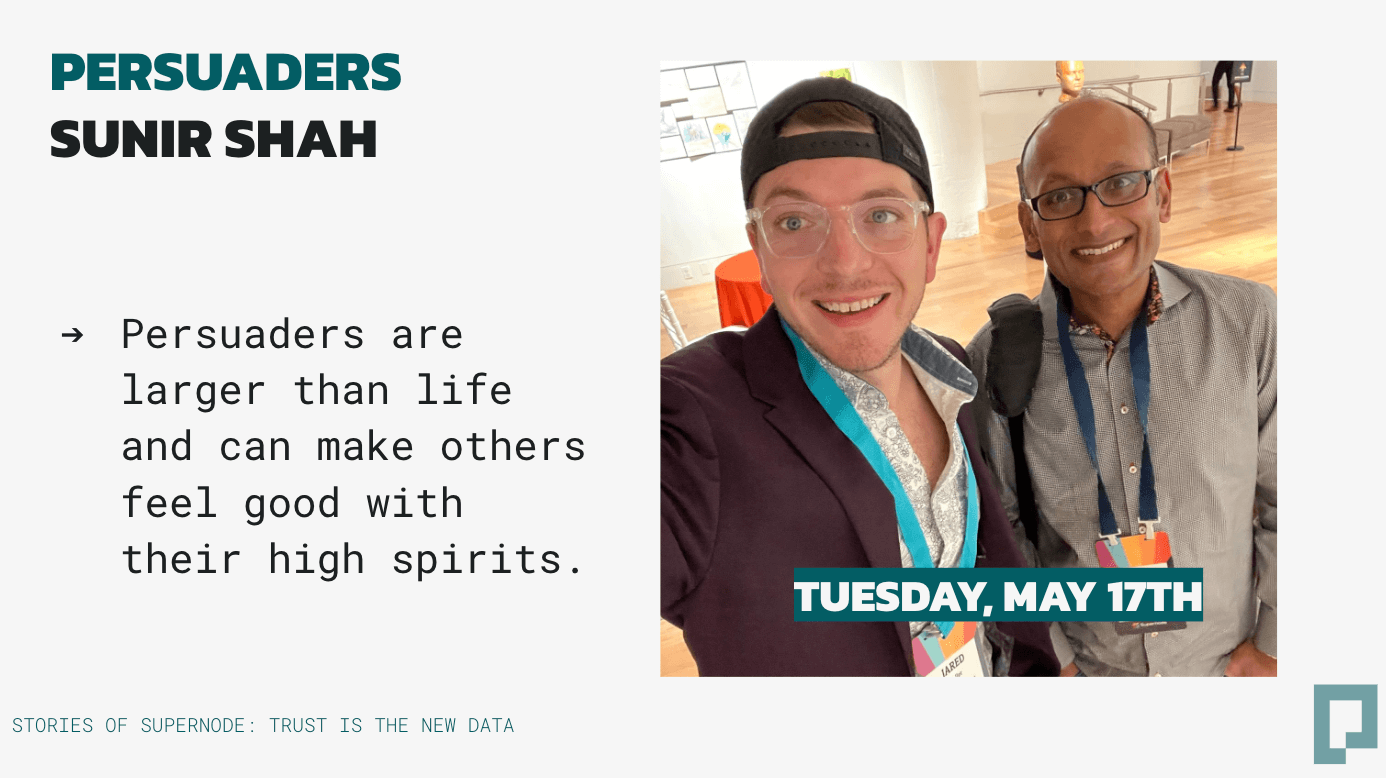

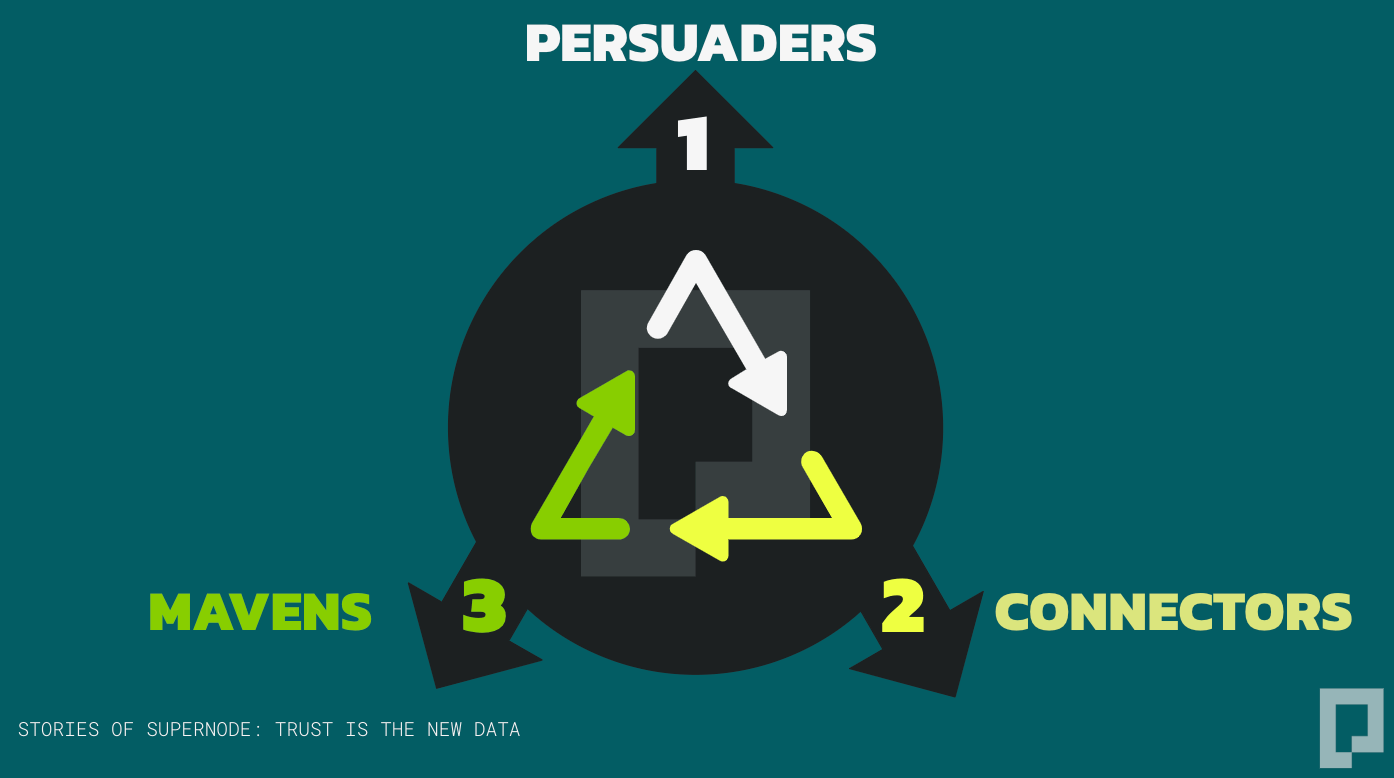


This is a test comment.
This is a longer test comment to see how this looks if the person decides to ramble a bit. So they're rambling and rambling and then they even lorem ipsum.